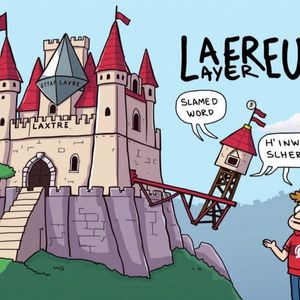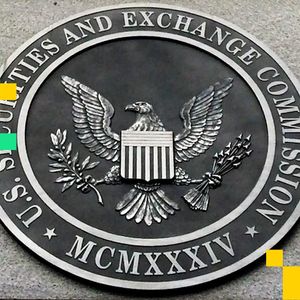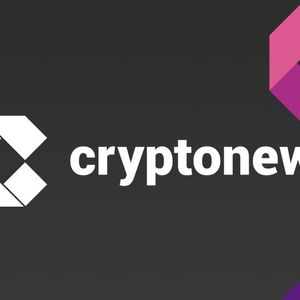BitcoinWorld Critical Concerns: Unpacking the ‘Bogus’ Claims Around Layer 2 Security A bombshell claim from Anatoly Yakovenko , co-founder of Solana , has sent ripples through the crypto community. He recently labeled the assertion that Ethereum Layer 2s inherit the security of Layer 1 as ‘completely bogus.’ This provocative statement challenges a fundamental belief within the blockchain space and ignites a crucial conversation about Layer 2 security and its true implications. What’s the Big Deal About Layer 2 Security Inheritance? Many assume that by building on top of Ethereum , Layer 2 solutions automatically gain the same robust security guarantees. This perception is a cornerstone of their value proposition. However, Yakovenko argues that this isn’t entirely accurate, highlighting potential vulnerabilities that often go unaddressed. His comments, made during an active discussion on X, delve into the often-overlooked complexities. He emphasizes that while Layer 2s aim to scale Ethereum , they introduce their own set of security and decentralization trade-offs that warrant closer scrutiny. Are Layer 2 Security Mechanisms Truly Decentralized? One of Yakovenko’s primary concerns revolves around decentralization. He points out that many Layer 2s rely on multi-signature (multisig) arrangements to control user funds. While multisigs offer a degree of protection, they concentrate power in the hands of a few signers. Centralized Control: If a small group controls the multisig, they could potentially freeze or misappropriate funds. This introduces a single point of failure. Trust Assumptions: Users must trust the individuals or entities holding the multisig keys. This deviates from the trustless ideal of a true Layer 1 blockchain. Governance Risks: Decisions regarding upgrades or emergency protocols often rest with these centralized entities, impacting overall Layer 2 security . This raises a fundamental question: Can a system be truly decentralized if its core security relies on a select few? Yakovenko suggests that the current state of many Layer 2s falls short of the ideal. The Auditing Nightmare: A Challenge for Layer 2 Security Another significant point raised by Yakovenko is the sheer complexity of Layer 2 codebases. He suggests that their extensive nature makes comprehensive auditing ‘practically impossible.’ This raises serious questions about the hidden risks within these systems. Consider the implications: Vulnerability Exposure: Unaudited or partially audited code can harbor critical bugs or exploits, leaving user funds vulnerable to attack. Development Speed vs. Security: The rapid development cycles of many Layer 2s might prioritize speed over thorough security checks. Expert Scarcity: Finding enough highly skilled auditors capable of dissecting these intricate systems is a major challenge for ensuring robust Layer 2 security . Without rigorous auditing, the promise of inherited security becomes questionable. Users are left to trust systems whose underlying mechanisms may not have been fully vetted, posing a significant risk to the integrity of funds. What Does This Mean for the Future of Layer 2 Security ? Yakovenko’s remarks serve as a vital wake-up call for the entire blockchain ecosystem. It compels developers, users, and investors to critically re-evaluate the foundational assumptions about Layer 2 solutions. This isn’t about dismissing Layer 2s entirely, but rather about fostering a more realistic understanding of their current state and potential limitations. The conversation should shift towards: Enhanced Transparency: Clearer communication about the specific security models and trust assumptions of each Layer 2. Improved Auditing Practices: Developing better tools and methodologies for auditing complex codebases. Progressive Decentralization: A roadmap for Layer 2s to move towards greater decentralization in their governance and fund control mechanisms, thereby strengthening Layer 2 security . The goal is to build a more resilient and truly secure multi-chain future, acknowledging the challenges along the way. This critical dialogue is essential for the long-term health of the crypto space. Anatoly Yakovenko’s candid assessment of Layer 2 security inheritance is a stark reminder that innovation often comes with trade-offs. While Layer 2s are crucial for scaling, their security models require continuous scrutiny and improvement. His ‘bogus claim’ statement should not be seen as an attack, but as a catalyst for a healthier, more transparent dialogue within the blockchain community. Ultimately, ensuring robust security is paramount for the long-term success and widespread adoption of these vital scaling solutions. Frequently Asked Questions About Layer 2 Security What is Layer 2 security inheritance? It refers to the idea that a Layer 2 solution, built on top of a Layer 1 blockchain like Ethereum , automatically benefits from the underlying Layer 1’s robust security features. The assumption is that the Layer 2 inherits the same level of safety and immutability. Why does Anatoly Yakovenko call Layer 2 security claims ‘bogus’? Solana co-founder Anatoly Yakovenko argues that Layer 2s introduce their own security and decentralization trade-offs. He points to issues like centralized multisig control over user funds and the immense complexity of Layer 2 code, which makes thorough auditing practically impossible. These factors, in his view, weaken the claim of direct security inheritance. What are the main security concerns with Layer 2s? Key concerns include potential centralization through multisig governance, the risk of unpatched vulnerabilities due to complex and unauditable codebases, and the inherent trust assumptions required for their operation. These factors can lead to risks like fund freezes or exploits. How do multisig arrangements impact Layer 2 security ? Multisig arrangements, while offering some protection, can centralize control. If a small group of individuals or entities holds the keys, they effectively have control over user funds and critical protocol decisions. This introduces a point of failure and a trust requirement that contradicts the decentralized ethos of blockchain, potentially compromising Layer 2 security . What is being done to improve Layer 2 security? Efforts are underway to enhance Layer 2 security through improved transparency in their security models, the development of more sophisticated auditing tools and practices, and a push towards progressive decentralization of governance and fund control mechanisms. The community is actively discussing these challenges to build more robust solutions. Did Anatoly Yakovenko’s insights on Layer 2 security spark your interest or challenge your assumptions? Share this crucial discussion with your network and join the conversation! Your voice helps shape the future of decentralized technology. Share this article on social media and let’s explore these critical concerns together. To learn more about the latest Layer 2 security trends, explore our article on key developments shaping Ethereum Layer 2s institutional adoption. This post Critical Concerns: Unpacking the ‘Bogus’ Claims Around Layer 2 Security first appeared on BitcoinWorld .
















